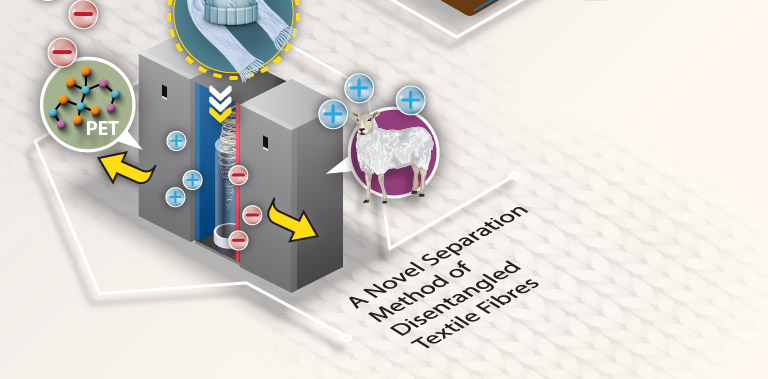
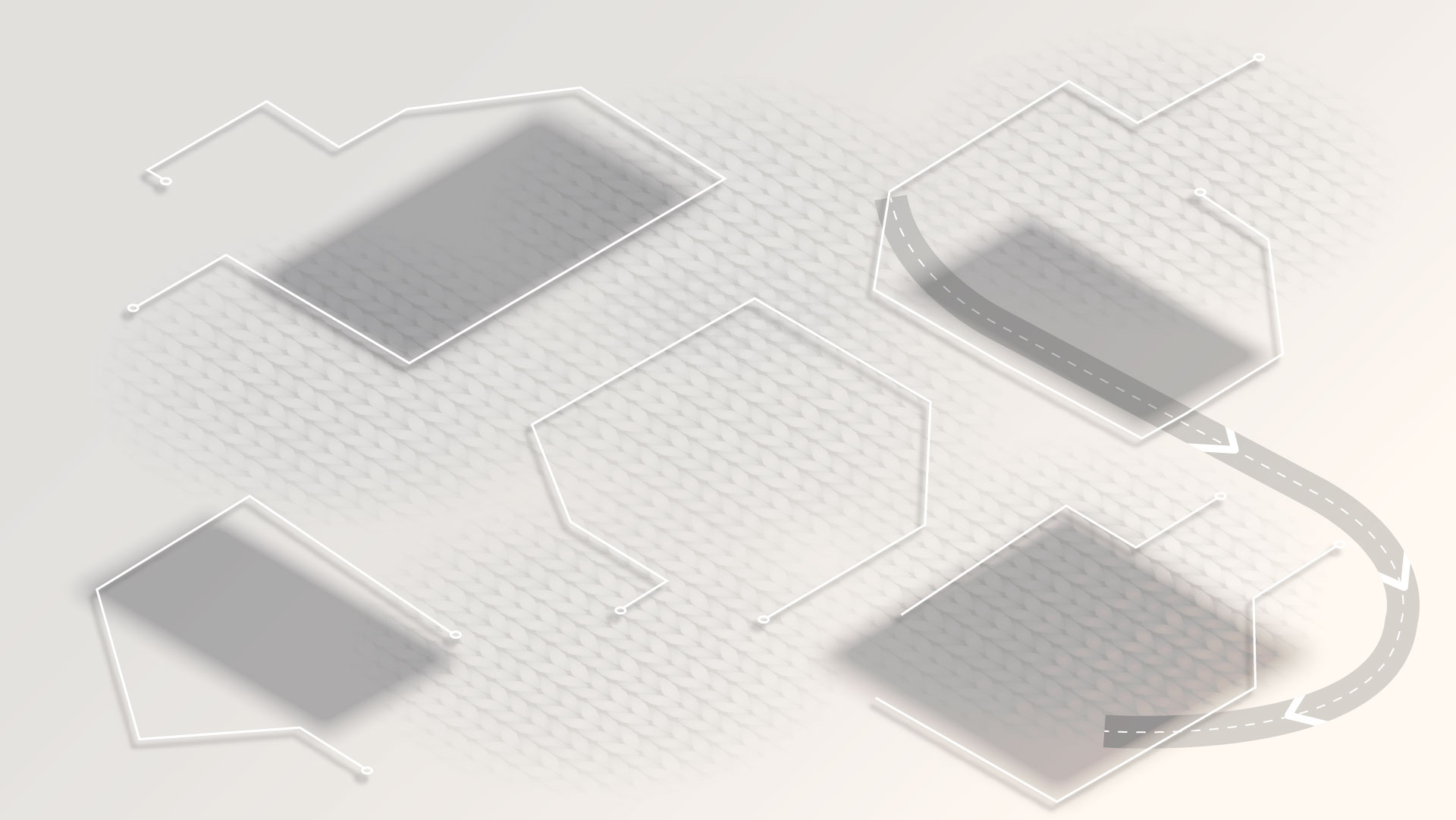

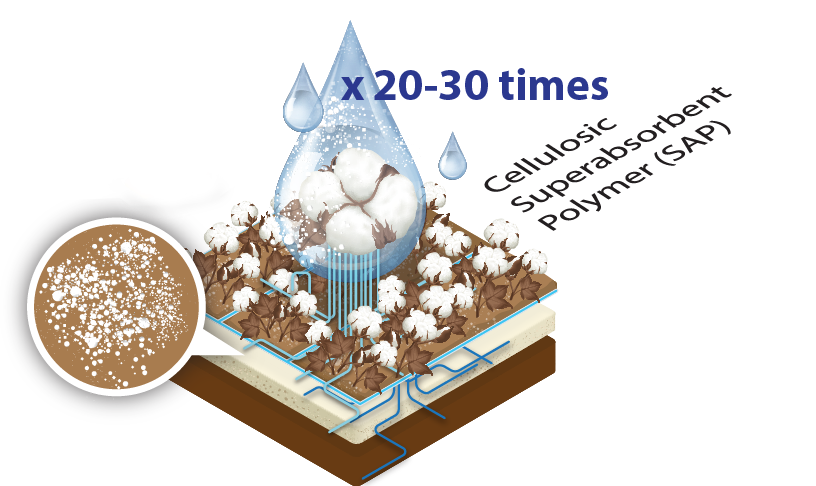




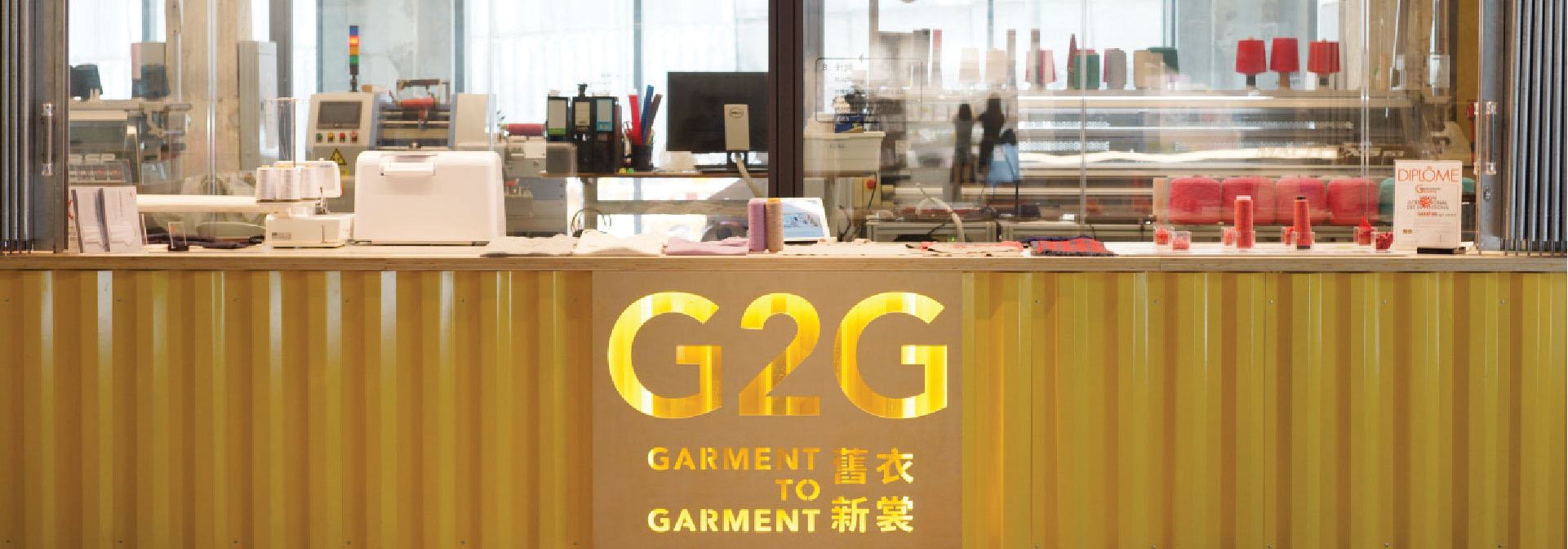
The Garment-to-Garment Recycle System (G2G) is the first-of-its-kind garment recycling system set up in a retail shop at “The Mills” in Hong Kong in September 2019 and recycles unwanted garments from consumers into new and wearable clothes. The complete garment-to-garment process takes place in a standard 40-foot container, demonstrates integral and closed–loop garment recycling processes from sanitization, fibre opening, carding, spinning, all the way to garment knitting.
The project team explores solutions to technical challenges posed by the packaging of necessary machines and related devices into a small space, integrating process and technical solutions into the mini-scale system within the 40-foot space. With its water-free, anti-vibration, noise- and dust-controlled design, the production line minimizes noise and disturbance to nearby businesses, and so can be operated within community spaces such as shopping malls.
Double-layered glazing of the container protects the retail space from the noise generated by the machines, while consumers can clearly visualise the recycling process and mainframes that run the system. Consumers can bring their used garments to the shop, select the output styles, and witness the production process of “giving new life” to their old clothes. It is an interactive and relevant experience, and a good educational tool to deliver the message of sustainable fashion.
We are excited to collaborate with our Swedish partners to launch “Looop”, the first retail model of G2G system, in one of H&M’s stores in Stockholm, Sweden in October 2020.
Awards:
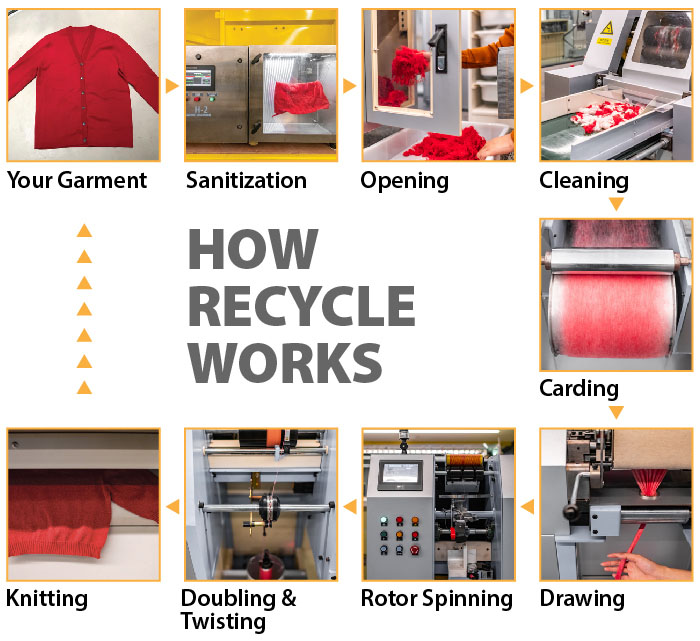
Greenhouse gas pollution (GHG) is one of the causes of Global warming. It leads to temperature rise, triggering changes for the world’s climate. The global fashion industry produced around 2.1 billion tonnes of GHG emissions in 2018, amounting to 4% of total emissions in the world.1
Clothing production has approximately doubled from 50 billion units to 100 billion units from 2000 to 2015, but average number of times of a garment worn decreased by 36% in these 15 years. Also, less than 1% of material used to produce clothing was recycled in 2015.2 Fast fashion becomes a major challenge to the fashion industry to reduce emissions of GHG.
Sustainability is a focal point of our work at HKRITA. One of the major areas of breakthrough is making a linear industry circular with textile recycling innovations. Guiding our work is a vision of a truly circularity model whereby more post-consumer garments can be recycled and reused, ultimately reducing textile waste and demand for virgin materials.


Garments are often made from a blend of different fibres in order to improve fit, style, comfort and longevity. Cotton and polyester blends are most popular combinations. These materials make up a considerable number of garments disposed by consumers, a textile recycling solution that can completely recycle these fabrics is the best way to decrease number of these textile wastes ending up in our landfills.
We have developed an efficient hydrothermal treatment method to decompose cotton into cellulose powders, hence enabling the separation of the polyester fibres from the blends. The separation process uses only heat, water and less than 15% of a green chemical with a recovery rate of over 98% for polyester fibres in 2 hours.
The quality of the separated polyester fibres is maintained, leaving these recycled fibres ideal for spinning and manufacture of new fabric. The cellulose powder converted from cotton has great potential for application even outside the textile industry. For example, the superabsorbent polymer (SAP) is seen to be useful in the agricultural sector.
The quality of the separated polyester fibres is maintained, leaving these recycled fibres ideal for spinning and manufacture of new fabric. The cellulose powder converted from cotton has great potential for application even outside the textile industry. For example, the superabsorbent polymer (SAP) is seen to be useful in the agricultural sector.
Awards:
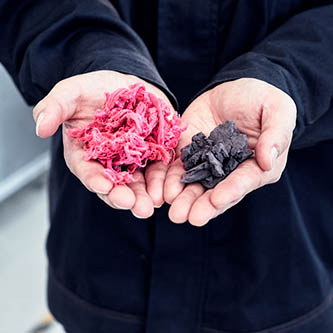 Photo by H&M Foundation
Photo by H&M Foundation

Cotton production consumes a huge amount of water, we have developed the superabsorbent polymer (SAP) to address the issue. It is a useful by-product of the hydrothermal treatment which effectively separates materials in recycled textiles. We successfully transform the recycled cellulose powder from post-consumer textile to SAP, which can absorb and retain more than 20-30 times of liquid relative to its own mass. It is an ideal agricultural water retention agent due to its huge ability to absorb and retain water, which helps to keep the soil moist and reduce water consumption during irrigation.
The ecological advantage of the new SAPs lie in its natural cellulosic properties. This alone offers huge benefits to the environment compared to most commercial water-absorbing SAPs in the market that often used in the manufacture of diapers and sanitary napkins, which are made of acrylate or petrochemical-based materials. The way petrochemicals are produced can have irreversible effects to the planet, as it burns fossil fuels and releases harmful emissions into our atmosphere. Its transportation also risks our land and water of damage caused by extraction and oil spills.
Awards:


Protein fibres, like wool, are one of the valuable textile materials. HKRITA has developed a system to separate protein fibres from synthetic textile material using the triboelectric properties of different kinds of textile fibres.
It consists of a fibre disentangler and a separation chamber, which are connected by a copper helix pipe. The helix pipe is made of copper because of its low resistivity and good grounding properties and can charge protein and synthetic fibres continuously. When fibres rubbing against the helix pipe, protein fibres will become positively charged, while synthetic fibres acquire negative charging. The charged protein fibres and synthetic material would be guided to opposite directions respectively for collection when they are exposed to strong external electrostatic field, to accomplish separation.
It is a physical separation process without using any water or chemicals. The value of the protein fibres can be retained after separation and can be reused in the production of high-value garments.




